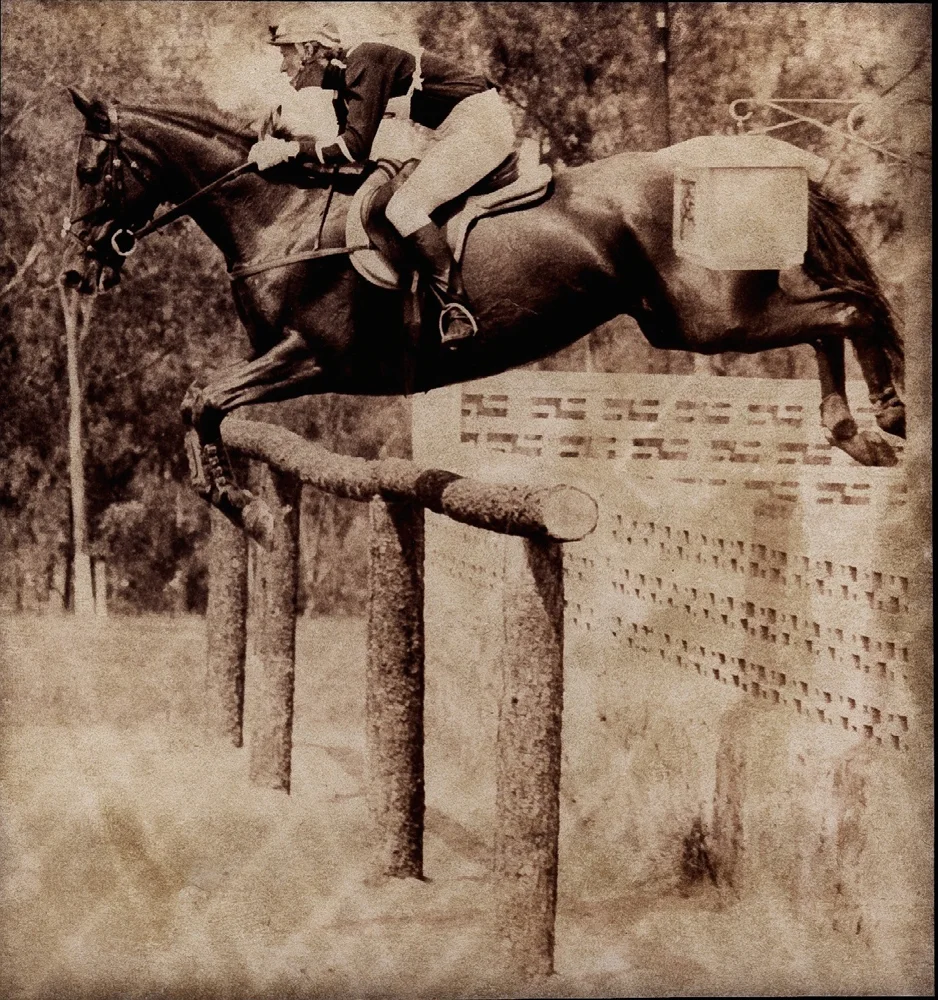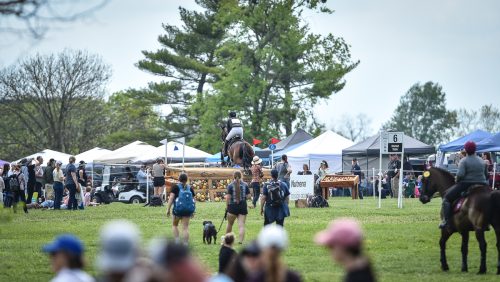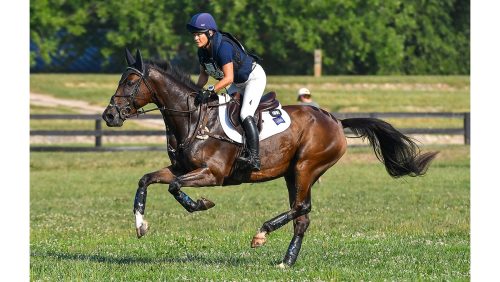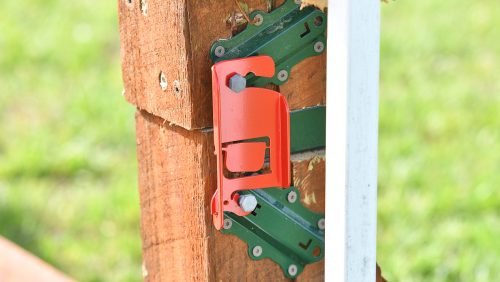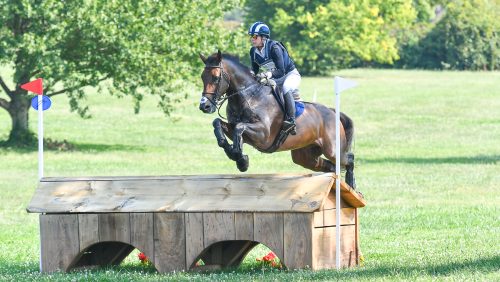In his Oct. 31, 1975 editorial, then Chronicle editor Alexander Mackay-Smith relived the tale of cross-country day at the Pan American Games in Mexico City, a day that he called “the most bizarre in the history of international Three Day competition. All the following occurrences, impossible as they may seem, were related by the riders involved and were heard by the writer of this article.”
It had been 20 years since the Pan American Games were held in Mexico, and for the first time, the Mexican Army took over running the equestrian events.
Bruce Davidson, then just 25 years old and already a veteran of the 1972 Olympics in Munich, rode the U.S. Equestrian Team’s Thoroughbred gelding Golden Griffin, a strong and bold cross-country machine with whom he’d won the advanced division at the Ledyard Farm Horse Trials (Mass.) and the USET Spring Three-Day Championships at Kentucky that spring.
The trouble for the U.S. team began when, during Phase C of roads and tracks, a military band stationed by the road began playing loudly as soon as Davidson and fellow team riders Beth Perkins and Mary Anne Tauskey rounded the bend.
Despite shouting to the band to stop playing so they could get their terrified horses past, the conductor apparently gleefully instructed his band to carry on. Other riders reported a similar story.
Once on Phase D, Davidson and Golden Griffin ran into more trouble at fence 9, a large parallel oxer around a tight turn.
“Golden Griffin came around the corner, and I went to set up to jump the oxer, and somebody grabbed the reins on my bridle. My horse jumped in the middle of the oxer,” Davidson recalled. “We were held up, and there were lots of protests, and I was sent on my way again.”
ADVERTISEMENT
Golden Griffin stumbled and wrenched his back, and Davidson bruised his right leg badly against the fence as they ground to a halt. Davidson immediately started his watch so he would have proof of how long he was halted.
According to the Chronicle’s report, the armed military man who had grabbed the bridle, the fence judge, an interpreter and Davidson figured out that he was to be stopped for an unknown incorrect infringement of the rules on Phase C. Davidson remembered team coach Jack LeGoff came to his rescue, and it was decided that the fence judge should call officials on the phone to determine what to do. Thirteen minutes later, Davidson was allowed to go on his way and picked up the fastest time of the day over the cross-country.
“Whatever they kept saying to me,” he said. “I just kept saying, ‘I don’t understand.’ Very quickly, part of the American support system was right there. They held my horse for me, and Jack LeGoff got there quite quickly. I don’t remember all of the conversations that took place. I pretty much stayed quiet because I was a competitor and didn’t want to get in any fiasco. A lot of words were exchanged between those who knew what they were saying!
“I think the language barrier was part of the problem, and I think it was a tricky situation, the whole thing. In the end, it was a rough experience. Golden Griffin got hurt because of it. I was very young and new to the whole thing, and it was all part of the learning experience in my life.”
The pair went on to show jump the next day with two rails down, which was enough to give them the individual silver medal. The U.S. team of Perkins on Furtive, Tauskey on Marcus Aurelius, Tad Coffin on Bally Cor and Davidson won gold. Coffin won individual gold.
“They took the crash out of his record,” said Davidson. “It was bizarre, and I think it was sort of the way Mexico runs today as well! It doesn’t seem to follow the rules and is not too stable in what’s going on. It just shows that no matter where you are, something can happen that you don’t expect. That’s what I got out of it.”
Several more suspicious incidents occurred at the Pan Ams for both the U.S. and Canadian riders that made many at the time think there was a conspiracy against foreign teams, like an incident in which Coffin incorrectly received 264 time faults on Phase C and had to pay $25 and make an official protest to get them taken away. Davidson agreed that maybe their hosts were trying to sabotage other nations, but overall, the competition was up to standard as far as courses.
ADVERTISEMENT
“The cross-country course, they worked hard on and pretty much swept with brooms the whole track,” he said. “They had a proper slide like they would in Mexico, almost a Snowy River-type situation. That was traditional in that country. The footing was changing, and there were many road crossings, but that’s very common anyway. I thought in the end, they did put on a good effort and gave us a good Pan American Games. It was hampered by whoever it was that interfered with the competition. I always had the feeling it was sort of like an outside force, but it all happened so fast, I couldn’t really tell you.”
Golden Griffin went on to recover and competed again. Davidson said he ultimately died a few years later of a seizure while being lunged.
Davidson, Unionville, Pa., remembered the gelding as a strong, old-fashioned Thoroughbred.
“He was aggressive. He was a relentless galloper and would have been a great Grand National horse,” he said. “He was a competitive horse and a strong horse. Really too strong for me, I think. In those days, I didn’t mind a strong horse, and I was good on a strong horse, but they’re not easy to ride. He was over-aggressive and would often try to take over and run—especially in the steeplechase phase, he was a hard horse to settle. He was difficult to settle in the dressage, but he was a good jumper and a brave horse with lots of scope. Very much old-fashioned. He is a horse of times gone by that would not have adapted so well to the current short format. He needed the whole A, B and C just to settle down.”
As a young person, Davidson appreciated the opportunity to travel to a foreign country and experience another culture—for good or bad, and looks back on his experience in 1975 as just another one of life’s many experiences.
“The Pan Ams have always been a great opportunity for me, and I’ve appreciated that opportunity,” he said. “The places they’ve taken us are wonderful, and the luck I’ve had was wonderful as well.”

